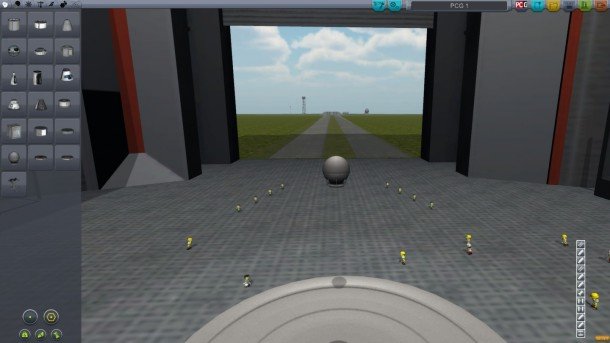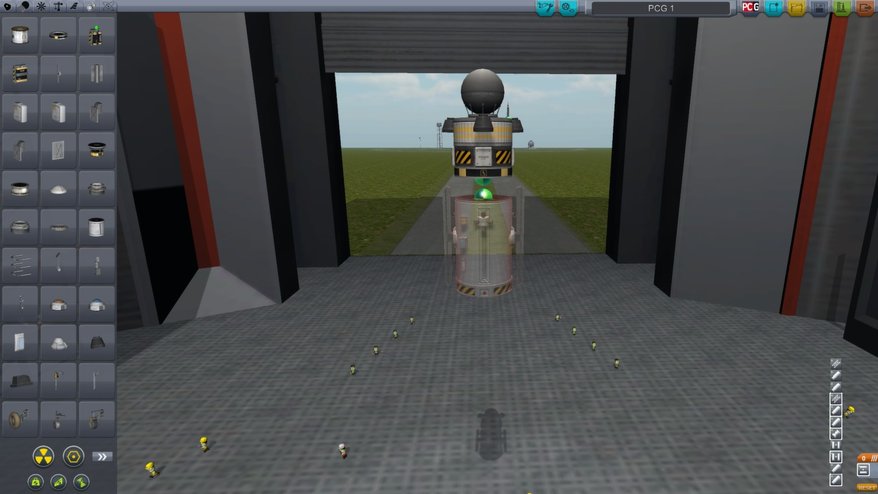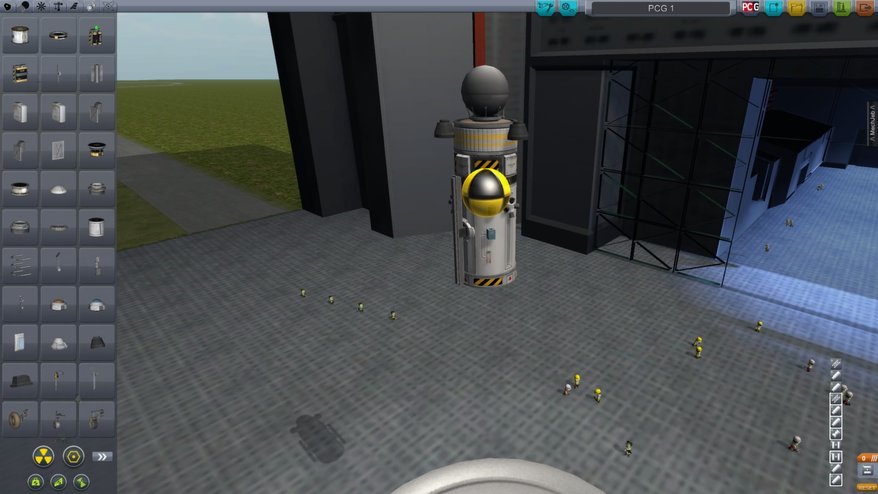Kerbal Space Program chronicle — part one: achieving orbit for science

The sun has risen on the dawn of a new era for Kerbin: the age of the rocket. I make my way to the Vehicle Assembly Bay, the oversize hanger where all rocket design takes place. Along the left side of the room, our engineering teams have thoughtfully laid out all of the fuel tanks and rocket engines and solar panels, everything I need to build rockets, planes, rovers, space stations, and moon bases. Our design teams have been working overtime to prototype designs drawn from other cultures and worlds, so I've got a ton of schematics to choose from. Word is that rocket scientists have been posting their designs online, which will be handy if I need some inspiration.
Every rocket needs a core, a command center. This can either be a cockpit module for a single or multiple astronauts or a computerized remote control receiver. For my first satellite, dubbed PCG 1, the Stayputnik Mk. 2 is perfect: it does the job without weighing very much or sucking up too much electricity.

Every rocket needs a few basic systems to survive, but the PCGSA bureaucracy is still sorting itself out, so these essentials aren't actually written down anywhere and had to be discovered through trial and fiery error. Make no mistake: this information was purchased with the blood of brave Kerbals unfortunate enough to have me as a leader. If I wasn't the head of their space program, I feel confident that they would convict me for war crimes.
Anyway, Reaction Control System thrusters (those little jets of gas that move spaceships around without using the main engine) and a battery are two must-haves, especially for satellites. Assuming the launch goes well, this satellite will be in orbit for years after the main thruster engine is gone, and it will need the RCS thrusters to move around and the batteries to survive orbiting around the dark side of Kerbin.

RCS works best when it's placed over the center of mass, and my scientists helpfully show me where the center of mass, center of lift and center of thrust are through icons in the bottom left of my screen. I've launched a few rockets that just tumbled end over end before exploding in an expensive fireball, and it was because I didn't check out the center of thrust and center of mass readouts. (It also happens to the pros occasionally— I'm lookin' at you, NASA .)
The biggest gaming news, reviews and hardware deals
Keep up to date with the most important stories and the best deals, as picked by the PC Gamer team.

